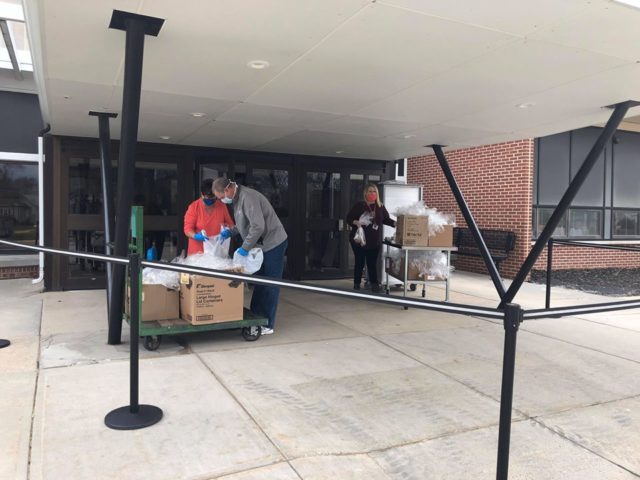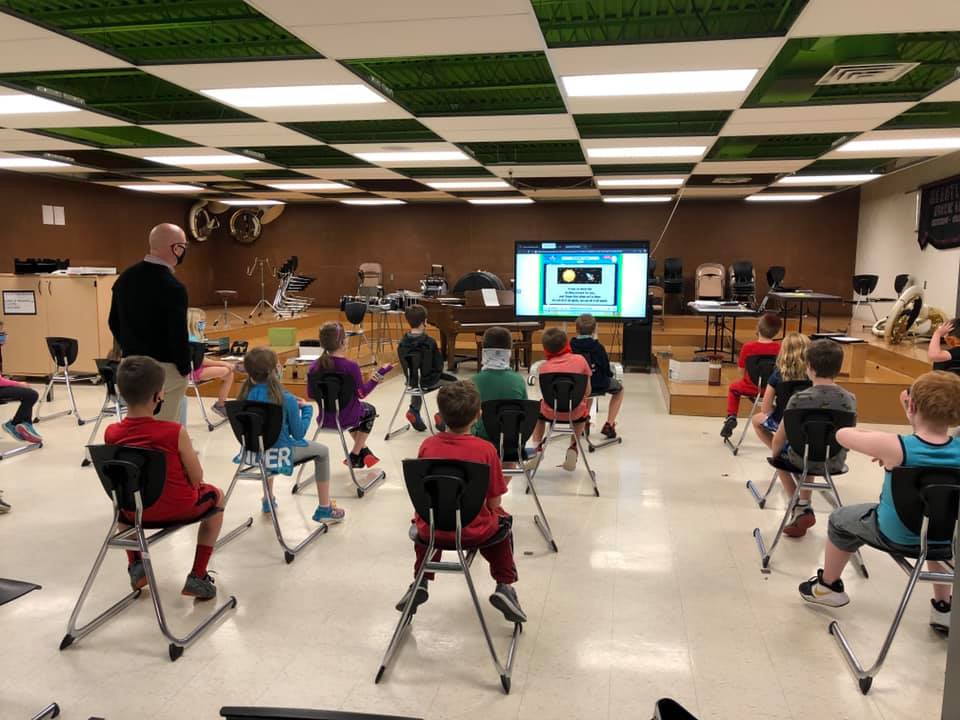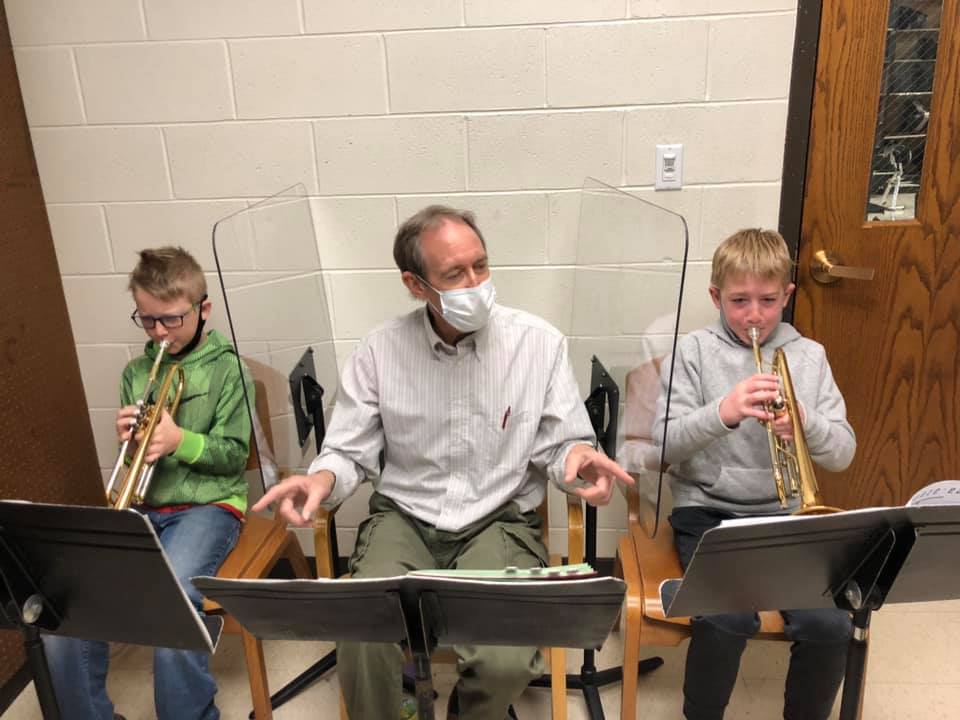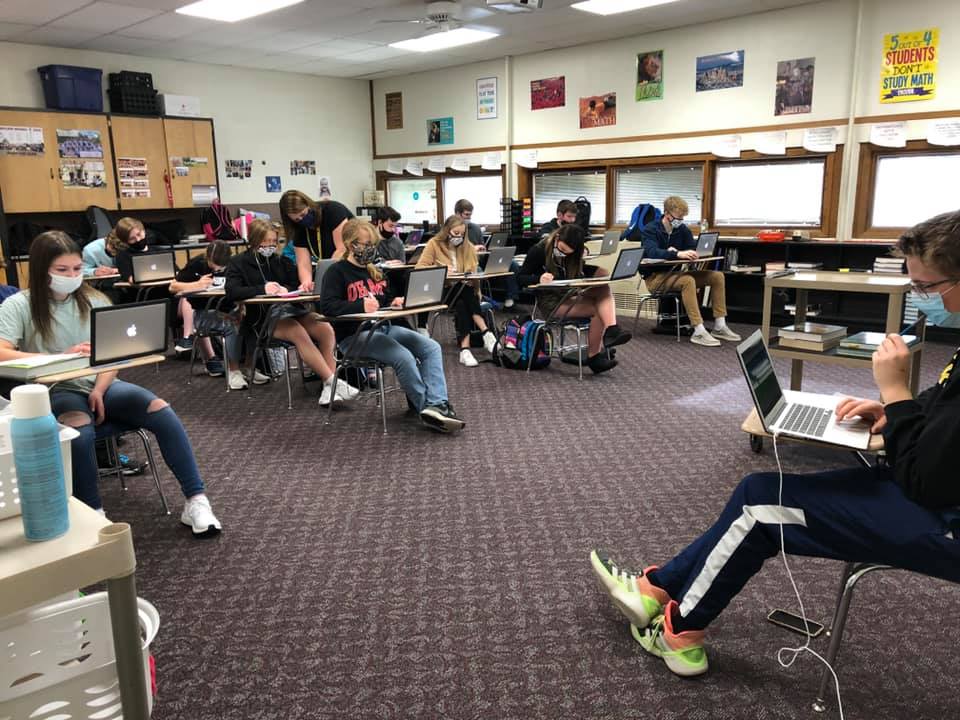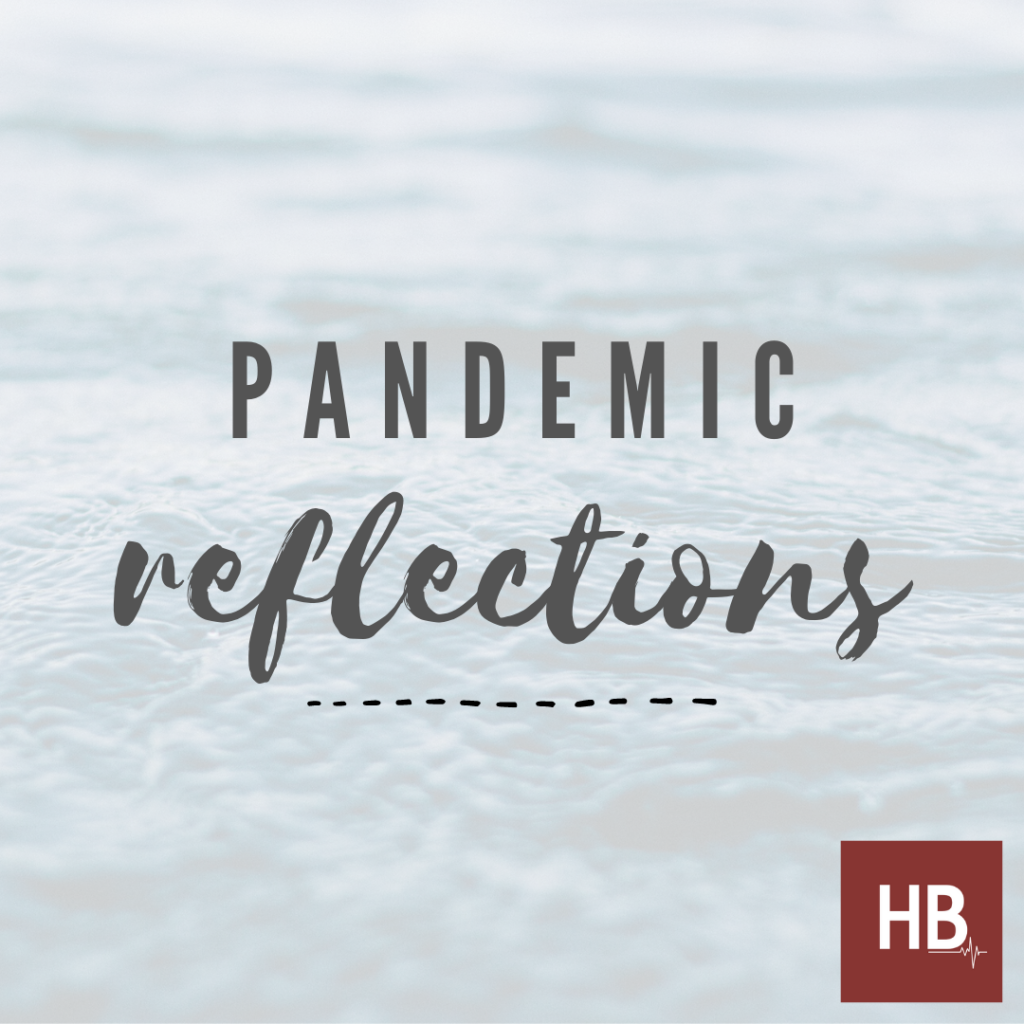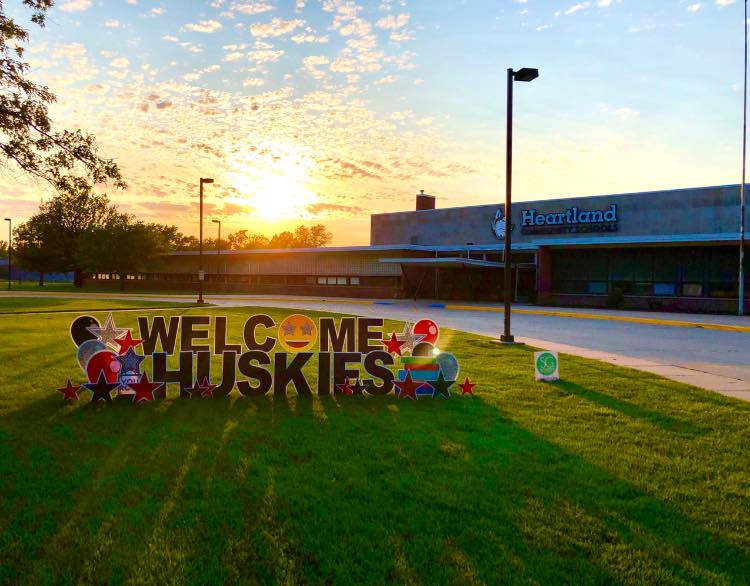
Heartland Superintendent Brad Best recalls first hearing about COVID-19 when news outlets reported about it overseas. As world maps displayed tracking dots of the virus inching closer, it seemed to be a matter of time before it arrived here. What would this mean for the school? That was a looming, frightening question.
Schools prepare for a variety of circumstances, but a pandemic was not a situation Mr. Best ever anticipated dealing with. As the implications and realities began to sink in last March, he specifically recalled, “The biggest thing was the unknown and the fear. How quickly would it spread? How deadly would it be? This made it very hard to plan for.”
By mid-March, the probability for finishing the school year in-person looked dim. When asked how this decision-making felt, he explained, ”It was a huge weight because not everybody was on the same page. You do what you feel is best with the information given to you at the time, and that’s the best you can do. We were in session a few days later than many other schools because we believed school was the best place to be. We hung on for as long as possible, but then there were mandates to close the doors.” March 17, 2020, marked the final day of school in-person at Heartland for that school year.
Amidst the shock, decisions had to be made about how to proceed without students and staff in the building. The staff concluded that the best option would be to provide enrichment packets for students. Families were harshly hit with pandemic effects, and facilitating their children’s learning when some didn’t even have appropriate tools or adult help at home would add another layer of stress. Brad remarked, “We decided that we were going to use the last few weeks of the spring semester to explore things we don’t normally have time to. Looking back at it, we made the right choice.”
To continue serving families, however, the school quickly organized a plan to provide lunches to the students and children in the community. An estimated 75% of the student body participated in the meal pickups while the staff orchestrated it. “It reminded me that people around here would do anything they need to for the kids,” Mr. Best assured. In fact, the school had more individuals volunteer to help than they could even utilize. Another priority was maintaining relationships with the students. Teachers held online video chats, emailed, and called families to ensure the students remained accounted for. In such upheaval, it weighed particularly heavy on the staff to know that some students would now face vulnerable situations perhaps lacking food, supervision, and social and emotional support. These steps enabled them to care in the best possible way under the circumstances.
As May approached, graduation became the pertinent topic for the 2020 Heartland Seniors who had just completed a radical final year. It was decided to postpone graduation plans in hopes of having a physical ceremony. This came to fruition as the seniors were able to experience a highly unique ceremony in the gymnasium in August.
Summer was marked for school leadership with hours upon hours deciphering what the fall would entail. When asked about the advisement he was receiving, Mr. Best pulled a notebook from his desk explaining that each day protocols were noted in it and then revised hourly or daily. It was a learn as you go situation. With in-person learning as the goal, how could the school provide the most relaxed atmosphere while also keeping the hundreds of people in the building safe?
At last, August rolled around. The school adopted a mantra of, “Patience, flexibility, and grace,” as they ventured into uncharted territory. Realistically, however, Brad didn’t foresee making it through the school year with one or multiple shutdowns. Some families chose to keep their children at home as they weighed the health risks, but the large majority of students ventured back with new protocols in place.
The school year began as normal as feasible, but when cases escalated in the fall, the use of further tools such as mandatory masks were put into place. Notable changes to portions of the school year have included daily temperature checks, hand sanitizing/washing multiple times a day, physical distancing when possible, creating zones at recess to prevent transmission across classes, staff serving from the cart in the cafeteria, timers at lunch tables to stay within unmasked exposure limits, limited capacity at sporting events, and events moved to virtual audiences.
Collaboration has been essential throughout this past year. It has included work with the state, the education department, the health department, local medical professionals, and fellow school leaders. A camaraderie of superintendents and service units has been particularly beneficial in exchanging ideas and implementation practices. The extra protocols and information have meant between 5-20 hours of extra work each week for Brad and the staff.
On that note, the staff response was described as amazing. “That’s the cool thing about Heartland is that everybody has the same goal, and that’s to take care of kids, to move them along, and to prepare them for their future.” From extra disinfecting, teaching students in quarantine as well as the classroom, washing masks for the next day, and numerous other acts, it has been a year of teamwork. While news reports showed some schools in America refusing to open, Heartland held firm to their belief that the structure and care of the school would be the best place for the students. Mr. Best cited that the Heartland School Board echoed this sentiment, exemplifying trust and support in the reopening plan. “We are very fortunate to have a group that puts children first.”
While there are certainly challenges and inconveniences for the students, overall it has gone very smoothly. Life skills of adaptation and resilience are built-in curriculum additions for the year. “Our students have always been conscientious of each other,” said Brad, observing their care for one another through this. All of the students have also caught up on any schooling they missed after last March and are academically on track.
Beyond the walls of the school, the community response has overall been very supportive. Parents and community members were willing to trust the plan and give it an attempt. Of course, as the pandemic occurred in an already polarizing election year, this presented some ripples that carried over to various protocol stances. This, however, has been true across nearly all communities.
One year later, Heartland is heading into the final quarter of the pandemic school year. In remark, Mr. Best maintained his focus stating that at this point he is, “Optimistic.” He then restated, “Tired and optimistic. If we can hang on a little longer to good practices, I think we will remain in a good place. I’m looking forward to next fall.” As cases decline and vaccines roll out, it appears that it will be a summer of recuperating and a more normal 2021-22 school year. Last week the school also relaxed a few safety guidelines based on the improving case situation. “This will hopefully help students see that there is light at the end of the tunnel,” Mr. Best asserted.
As the school delays any preliminary celebrations, it seems that a monumental one will be due to them this May—the successful completion of a full school year during a pandemic.
Other snapshots from the year:
(Some photos from the HCS Facebook page)
See other Pandemic Reflections:
> Henderson Food Mart




























